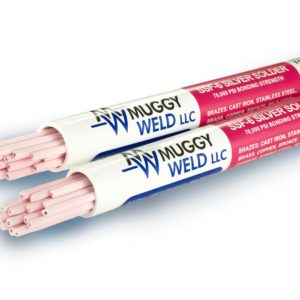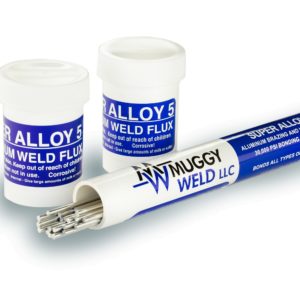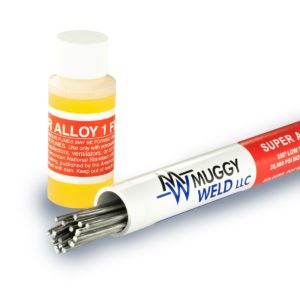How to Solder Aluminum to Brass with a Butane Torch
Occasionally in maintenance applications it is necessary join brass to aluminum. Whether it’s a hole in a line or tank, a damaged door panel, or a plumbing application, Super Alloy 1 is the right tool for the job.
Whenever you’re making a bracket or a repair of this size, you want to bring your heat up slowly to avoid overheating/burning the flux. If the flux turns black, the metal is too hot–simply remove the flux with warm water and a wire brush and start over. If the metal is too hot, it will impede the flow of the filler rod.
Apply the non-corrosive flux to the joint and broadly heat the brass and aluminum, observing the flux. The slower you bring up the temperature, the better the flow you’ll achieve. When the flux changes color, the parent metal is ready for the filler rod. Lay the rod against the metal and apply heat above and below the rod, making sure not to directly heat the rod. Add some heat to the back to pull the rod through and then allow the part to cool naturally. Excess flux can be removed with a wire brush and warm water.
The finished bond is 20,000 PSI with 100% penetration, front and back. Notice the bond doesn’t tear apart, even when bludgeoned with a hammer.
Super Alloy 1 bonds with galvanized, copper, brass, thin aluminum, steel, pot metal (also known as monkey metal, white metal), pewter, zinc die cast, and zamak–individually or in any combination, at just 350°F! This multi-metal solder flows at such a low temperature, almost any heat source can be used: heat gun, propane, large soldering iron, butane, MAPP gas, or oxyacetylene (heat source must adequately heat the parent metal to 350°F to achieve proper flow)
Note: Please observe all AWS Safety & Health Guidelines when using Muggy Weld products.
Check Out These Products
-

SSF-6 Silver Solder Rod: Flux-Coated SSF-6 56% Brazing Rod
$69.00 – $260.00High-Strength, 56% Silver Solder Rod🌡 Melting Temperature 1150 / 621 ⇄︎ Bonding Strength 70000 psi, 482.63 MPa 🔧︎ Sizes Available (in) 1/16 🔧︎ Sizes Available (mm) 1.58 -

Super Alloy 5 Aluminum Welding and Brazing Rod
$69.00 – $109.00600°F aluminum welding, brazing, and soldering rod. Ideal for aluminum boat repair and cast aluminum.🌡 Melting Temperature 600 / 317 ⇄︎ Bonding Strength 30000 psi, 206.84 MPa

